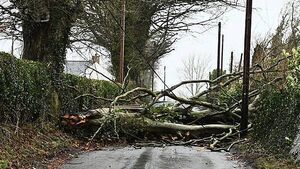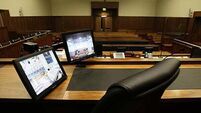No reporting system left Department of Education blind to Storm Éowyn school closures

Ken Foxe
The Department of Education had no idea how many schools had shut in the wake of a devastating storm – because there was no system in place requiring them to report closures or loss of power.
A review said they would develop a new system to track school closures and power outages in real time for future severe weather events.
The report was prepared in the aftermath of Storm Éowyn, which caused severe damage and broke 80-year-old records on wind speeds in January.
The department said that hundreds of schools had been left without power with 14 provided generators through official channels.
It said 12 schools had suffered significant roof or structural damage and the report noted a large spike in applications for emergency works grants afterwards.
The report said that while some aspects of the storm response had worked well, there were gaps particularly around the extent of damage.
It said: “In the immediate aftermath of the storm, hundreds of schools were closed on Monday, January 27th.
“The department does not have clarity on how many schools were impacted as not all schools reported their closure or the duration of their closure. Schools have not previously been required to do this.”
The report said as the week went on, the amount of information available began to improve with a focus on restoring electricity to at least 340 affected schools.
However, it said there was room in future for better coordination with ESB Networks.
The report explained: “The nature of the information sharing and updating was that information coming from the field was sometimes hours or a day old, so schools…reported as having no power had meanwhile had power restored.
“Likewise, power was restored in some areas, to be later interrupted again. The picture evolved constantly over several days, so accurate data gathering was not possible.”
Overall, hundreds of schools were left without power while 12 were hit with more severe damage.
However, the report said given wind speeds that were close to or at hurricane level, this was “inevitable.”
It said a key lesson learned was to have a more formal plan for reconnecting power to schools without electricity.
The report said it would not be realistic to have a supply of 4,000 generators on hand, but that electrical work could be done to make schools “generator ready.”
It said: “Such a programme of work would need to be planned and costed and an appropriate delivery mechanism considered (e.g. via a top up on the minor works grant).
“The design guidance for new schools could also be amended to facilitate same going forward.”
The report said the department could also consider the possibility of procuring a small supply of around 150 generators that would get students back into the classroom quickly, especially at special schools.
Asked about the report, the Department of Education said they had already been able to put some of the lessons learned into practice for the first storm of this season.
A spokesman said: “There was improved data coordination during Storm Amy earlier this month.
“This meant that ESB Networks was able to provide real-time updates on affected school sites and prioritise restoration efforts where needed.
“This proactive approach ensured that disruptions to teaching and learning were minimised and that schools received support in a timely and efficient manner.”
The spokesman said the department would continue working on strengthening their systems to ensure “even greater resilience and responsiveness” for future severe weather events.





